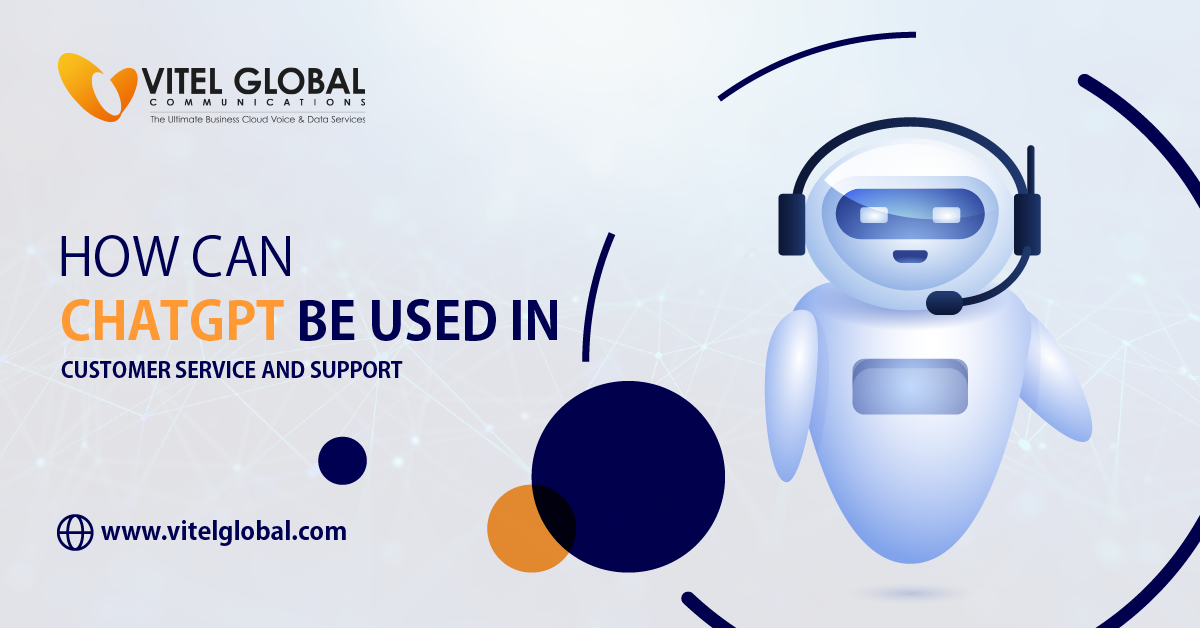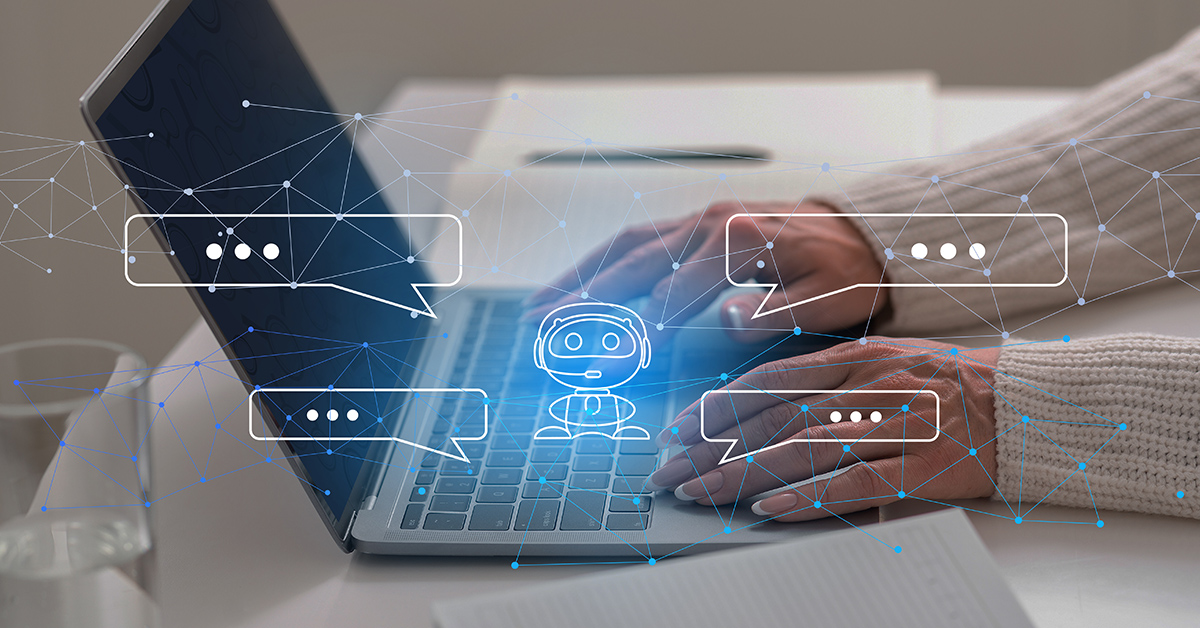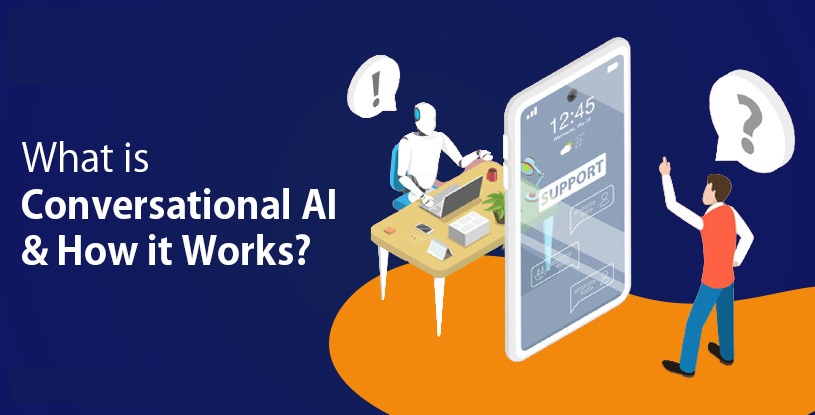How Can ChatGPT Be Used In Customer Service and Support

4 min read
Revolutionize Customer Service and Support with ChatGPT: Save time & money! Learn how to leverage AI for exceptional support.
In 2022, OpenAI released ChatGPT, an AI chatbot. The program was initially available as a sample but is now for sale. GPT stands for generative pre-trained transformer.
When it was initially released, ChatGPT was based on the hugely popular large language model (LLM) GPT-3. It is more particularly, an updated version known as GPT-3.5. ChatGPT employs the GPT-4 LLM, which is even more efficient as of March 2023, and this development is anticipated to continue.
A few steps need to take for ChatGPT to operate within a customer service ecosystem before this bright future can become a reality.
Customer service groups view ChatGPT as a self-service AI Chabot that can address typical surface-level assistance issues. Even though it is effective, a customer receives a true service experience when they can get answers to complicated queries and have their issues properly fixed. Conversational AI products like Thankful, which link with the organization’s current business intelligence systems, policies, procedures, and consumers’ purchase histories of delivering comprehensive help, may provide these full-service experiences.
How May ChatGPT Be Used In Customer Service?
Despite how popular ChatGPT may be, it’s crucial to remember that this technology was already used for customer assistance many years before OpenAI’s widely publicized launch.
Despite this promise being legitimate, ChatGPT still needs to prepare to make these significant improvements in customer service. But the LLMs that drive it are, as I mentioned. Leading automation firms are now leveraging it to reimagine the chatbot experience.
Using LLMs, what is feasible? LLMs, the technology underlying ChatGPT, can improve customer service in major key areas right away:
- Respond to reviews and complaints from clients
- Summarize client questions
- Boost chatbots that interact with customers
- Translate questions and answers
- Make virtual assistants that have conversations that sound natural.
Respond To Reviews And Complaints From Clients:
ChatGPT can help customer care representatives construct responses to complaints and reviews by communicating with customers through various channels, including email, social media, and product review websites.
For instance, a customer service representative may instruct ChatGPT to send an email in response to a furious customer, and the chatbot would do so — often politely and sympathetically what companies demand from their representatives.
Users must still edit, personalize, and fact-check comments despite ChatGPT’s capacity to produce responses that sound human. Because the tool’s developers trained it using internet data, it is biased and inaccurate in ways that can be found online.
Additionally, because this tool needs access to the particular business policies of organizations, users must be careful when responding to questions to avoid getting good discounts or other forms of payment that their organizations cannot provide.
Summarize Client Questions:
Agents can use ChatGPT to summarize queries and previous encounters, which will aid them in more rapidly identifying client issues and comprehending their views. By way of illustration, an agent may copy and paste a complaint email into ChatGPT and ask it to highlight the main issues.
Agents must be able to relate to customers’ issues and frustrations to provide quality customer service. Agents must read complaints and review clients’ prior conversations with the contact center to avoid repeating themselves. Better customer service may be made possible by taking these steps, but it may also take agents much time.
The content agents enter in the chat must be free of personally identifying information, such as customer names, addresses, phone numbers, and email addresses. Security experts are concerned that hackers may discover a way to obtain the transcript of all user interactions stored by ChatGPT.
Boost Chatbots That Interact With Customers:
However, advanced LLMs carry on real conversations in ChatGPT and other generative AI chatbots. While businesses cannot use ChatGPT as a chatbot for customers, OpenAI provides an API for its GPT-4 LLM that businesses can use to train the model using their knowledge base. Then, companies can integrate this bespoke LLM into their customer care chatbots, providing human-like conversations and responding to inquiries particular to the industry.
Customer-facing chatbots are useful for customer service departments since the early 2000s to aid with commonly asked queries, reduce the burden of agents, and cut costs associated with hiring new staff. But most have been rule-based chatbots that respond only randomly to a small set of keywords and phrases. Natural language can easily confuse these chatbots, which behave more like Google searches than they do like real conversations.
Read our blog about the Importance of Artificial Intelligence Customer Service.
Translate Questions And Answers:
Since many businesses cater to international clients, they must provide services in various languages. ChatGPT enables customer service representatives to translate text into more than 50 languages, including emails and comments on social media.
However, spelling and slang can muddle ChatGPT and result in translation errors. Contact centers can use ChatGPT with multilingual workers to avoid communication errors.
Make Virtual Assistants That Have Conversations That Sound Natural:
Organizations that provide customer support can power virtual assistants for their employees using generative AI tools like ChatGPT. For instance, businesses can link GPT-4 with current technologies like scheduling and call center platforms by using APIs to train GPT-4 on their knowledge bases.
Many of the advantages provided by the free ChatGPT application are also available from a customized virtual assistant, including email production and summarizing. The fact that businesses can train virtual assistants on their knowledge bases, however, allows them to produce more in-depth responses. Additionally, they provide greater convenience because businesses may use APIs to integrate new features into the regular tools agents use.
Chatbots can improve the customer experience, as ChatGPT has demonstrated. Text with a human-like feel can be visible significantly. It is more effective by automation methods through natural language processing (NLP). These solutions don’t prompt you to decide from a list of options or respond with brief, robotic responses. They converse instead in ways that closely mirror interactions with human agents.
Customers are more inclined to engage with a chatbot after experiencing these effortless dialogues. They still have access to a technology that can simulate the agent experience around-the-clock even if they cannot speak with a live person.
Once more, ChatGPT is one of many AI products capable of intuitively communicating with customers. Through personalized customer interactions that improve the overall customer experience, innovative automation solutions can enable a brand’s voice to stand out.
With the advent of ChatGPT, generative AI has experienced a significant uptick in popularity. Since then, many major companies, like Salesforce and Microsoft, have declared agreements with OpenAI, while other companies have created or intend to create their own generative AI tools.
Contact center managers can test ChatGPT for free. But might want to wait to spend money on a generative AI tool. Generative AI is still in its infancy. Therefore, it may take years of product development and fine-tuning before products are genuinely successful for customer support.
Published: June 1st, 2023
Subscribe to Our Latest Updates
Get monthly product and feature updates, the latest industry news, and more!





